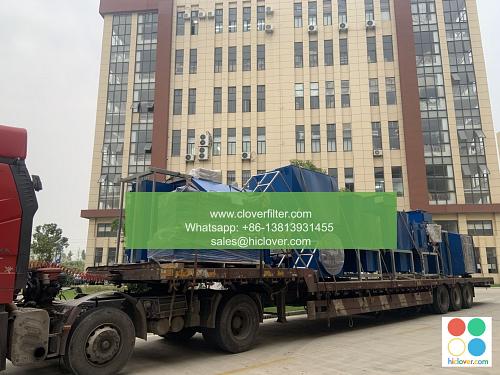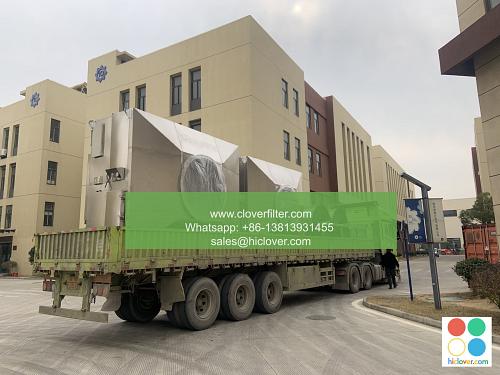The Science Behind Automatic Roll Air Filters in Electronics Packaging Plants

In the realm of electronics packaging plants, maintaining a clean environment is paramount to ensure the quality and reliability of the products being manufactured. One crucial aspect of achieving this cleanliness is the effective filtration of the air to remove pollutants and contaminants. Among the various types of air filtration systems, automatic roll air filters have emerged as a preferred choice due to their efficiency, convenience, and cost-effectiveness. This article delves into the science behind these filters, exploring how they operate, their benefits, and their significance in electronics packaging plants.
The basic principle of an automatic roll air filter is based on the continuous presentation of fresh filter media to the airstream, ensuring that the air passing through the filter is always cleaned by a new section of the filter material. This is achieved through a roll of filter media that gradually unwinds as the used portion becomes saturated with dust and contaminants, thereby maintaining a consistent airflow and filtration efficiency. The used filter section is then wound onto a separate roll, which is disposed of or recycled once fully saturated.
The science behind the operation of automatic roll air filters involves several key components and processes. First, the filter media itself is designed to capture particles of various sizes, from large dust particles down to microscopic pollutants. The media is typically made from a fibrous material that creates a mesh with pores of specific sizes, allowing air to pass through while trapping particles. The efficiency of the filter is determined by the size of these pores, the thickness of the media, and the air velocity through the filter.
As air passes through the filter, particles are captured through several mechanisms, including interception (where particles follow the air stream and come into contact with a fiber), impaction (where larger particles are forced to deviate from the air stream and collide with a fiber), and diffusion (where smaller particles are captured due to random Brownian motion, increasing their likelihood of coming into contact with a fiber). The combination of these mechanisms ensures a high efficiency of particulate removal, contributing to a cleaner environment within the electronics packaging plant.
The benefits of using automatic roll air filters in electronics packaging plants are multifaceted. One significant advantage is the reduction in downtime for maintenance. Traditional filters require regular replacement or cleaning, which can be time-consuming and may temporarily halt production. In contrast, automatic roll air filters minimize maintenance requirements, as the continuous roll of filter media ensures that clean filter sections are always presented to the airstream without the need for manual intervention.
Another important benefit is the consistent level of air quality maintained by these filters. Since the filter media is continuously replaced, the filtration efficiency remains high, even as the filter becomes loaded with contaminants. This consistency is critical in electronics packaging, where even slight variations in air quality can affect product quality and reliability. Additionally, the cost-effectiveness of automatic roll air filters is a significant advantage. While the initial investment in such a system may be higher than traditional filters, the long-term savings from reduced maintenance, increased filter life, and lower energy consumption due to consistent airflow resistance make them an attractive option.
In conclusion, the science behind automatic roll air filters underscores their value in maintaining a clean and controlled environment within electronics packaging plants. Their ability to continuously present fresh filter media to the airstream ensures high and consistent filtration efficiency, which is critical for the quality and reliability of electronic products. The benefits of reduced maintenance downtime, consistent air quality, and cost-effectiveness further solidify their position as a preferred choice for air filtration in these facilities.
FAQs
- What are the primary advantages of using automatic roll air filters in electronics packaging plants?
The primary advantages include reduced maintenance downtime, consistent high-level air quality, and cost-effectiveness due to reduced filter replacement and lower energy consumption.
- How do automatic roll air filters maintain their filtration efficiency?
They maintain their filtration efficiency through the continuous presentation of fresh filter media to the airstream, replacing the used section with a new one as it becomes saturated with contaminants.
- What mechanisms are involved in the capture of particles by the filter media in automatic roll air filters?
The capture of particles involves mechanisms such as interception, impaction, and diffusion, depending on the size of the particles and the characteristics of the filter media.
- Can automatic roll air filters be customized for specific electronics packaging plant requirements?
Yes, automatic roll air filters can be customized in terms of filter media type, thickness, and pore size to meet specific cleanliness and airflow requirements of different electronics packaging plants.
- Do automatic roll air filters require significant space for installation?
No, they are designed to be compact and can be easily integrated into existing air handling systems in electronics packaging plants, making them a space-efficient solution for air filtration needs.


